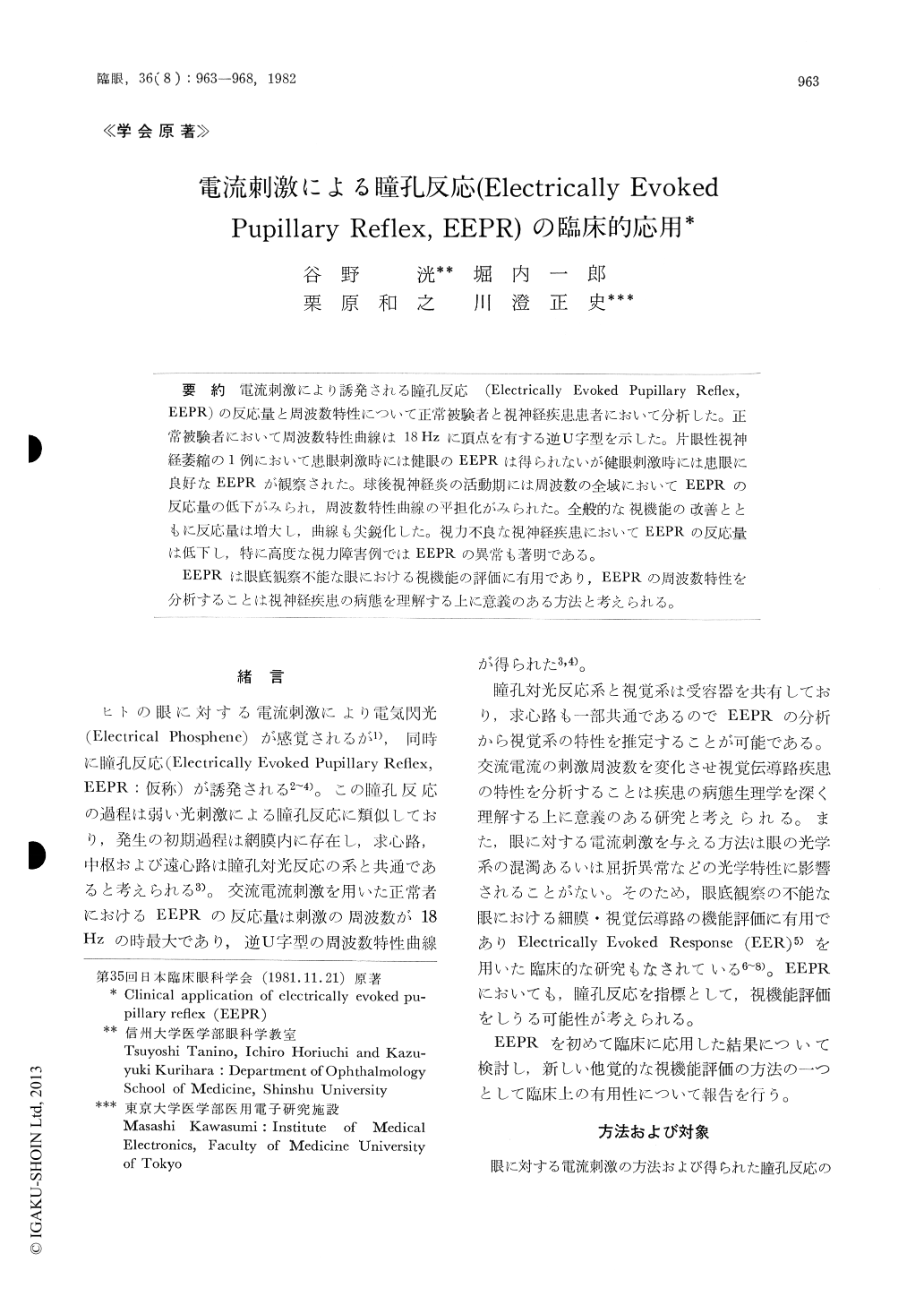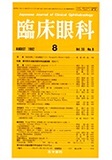Japanese
English
- 有料閲覧
- Abstract 文献概要
- 1ページ目 Look Inside
電流刺激により誘発される瞳孔反応(Electrically Evoked Pupillary R-eflex,EEPR)の反応量と周波数特性について正常被験者と視神経疾患患者において分析した。正常被験者において周波数特性曲線は18Hzに頂点を有する逆U字型を示した。片眼性視神経萎縮の1例において患眼刺激時には健眼のEEPRは得られないが健眼刺激時には患眼に良好なEEPRが観察された。球後視神経炎の活動期には周波数の全域においてEEPRの反応最の低下がみられ,周波数特性曲線の平担化がみられた。全般的な視機能の改善とともに反応量は増大し,曲線も尖鋭化した。視力不良な視神経疾患においてEEPRの反応量は低下し,特に高度な視力障害例ではEEPRの異常も著明である。
EEPRは眼底観察不能な眼における視機能の評価に有用であり,EEPRの周波数特性を分析することは視神経疾患の病態を理解する上に意義のある方法と考えられる。
The electrical stimulus to the cornea evokes pu-pillary reflex. This phenomenon was tentatively termed as electrically evoked pupillary reflex (EEPR). We examined the EEPR elicited by alter-nating current and its frequency characteristics in normal subjects and 6 patients with optic nerve disorders. As the standard procedure, the fre-quency of the stimulus was set at 18 Hz, the dura-tion of stimulus at 1 sec and the intensity at 1.0 mA. For the analysis of frequency characteristics, the frequency was changed between 2 and 80 Hz in 9 steps.

Copyright © 1982, Igaku-Shoin Ltd. All rights reserved.


